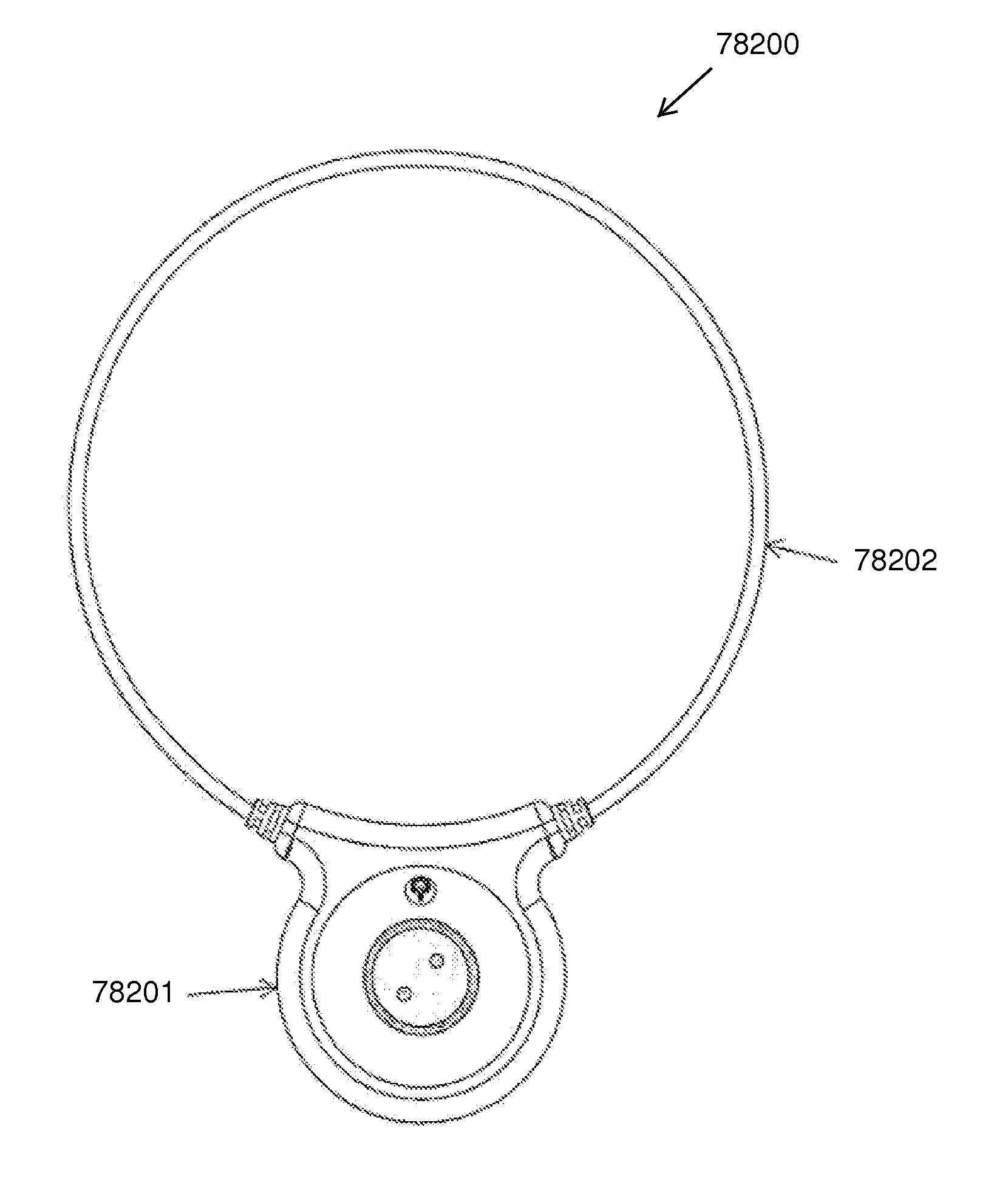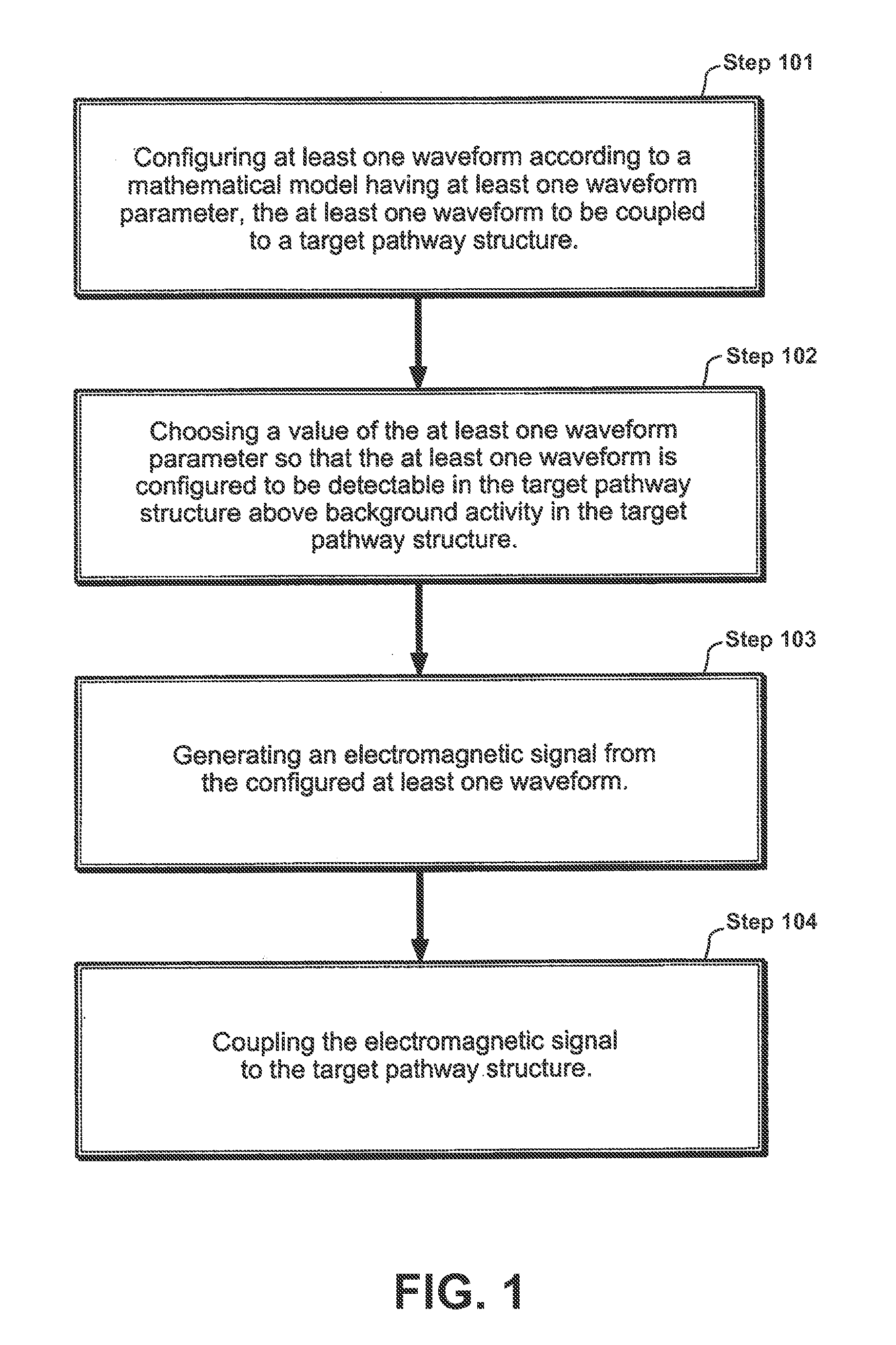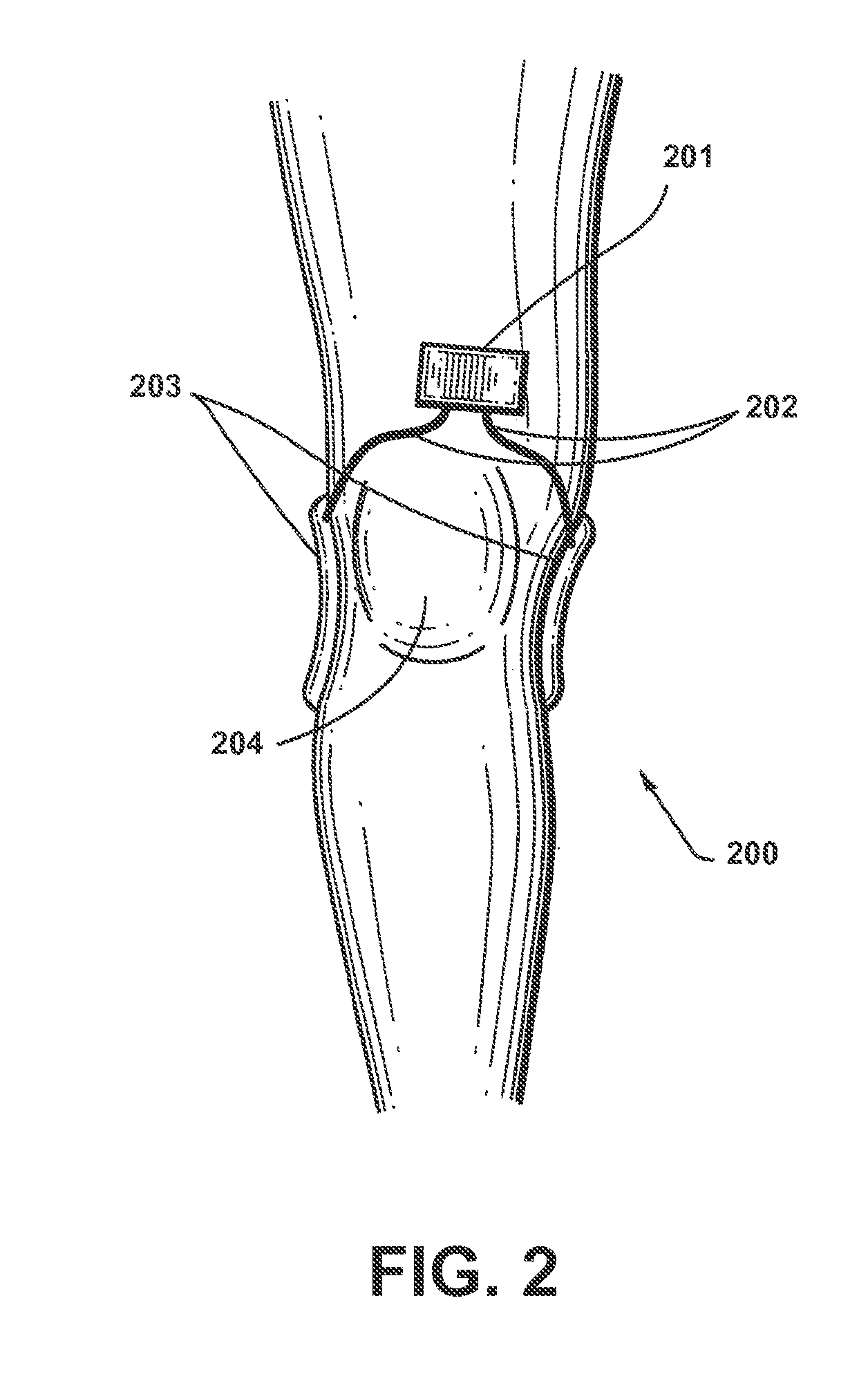Apparatus and method for electromagnetic treatment of neurological injury or condition caused by a stroke
- Summary
- Abstract
- Description
- Claims
- Application Information
AI Technical Summary
Benefits of technology
Problems solved by technology
Method used
Image
Examples
example 1
[0910]An EMF signal, configured according to an embodiment of the present invention to modulate CaM-dependent signaling, consisting of a 27.12 MHz carrier, pulse-modulated with a 3 msec burst repeating at 2 Hz and a peak amplitude of 0.05 G, was applied for 30 minutes to the MN9D dopaminergic neuronal cell line and increased NO production by several-fold in a serum depletion paradigm and produced a 45% increase in cGMP. The EMF effects on NO and cGMP were inhibited by the CaM antagonist N-(6-Aminohexyl)-5-chloro-1-naphthalenesulfonamide hydrochloride (W-7), indicating the EMF signal acted in this neuronal culture according to the transduction mechanism illustrated in FIG. 77A. These results are summarized in FIG. 79A.
[0911]The effect of the same EMF signal on cAMP production in MN9D cells was also studied. MN9D cells in serum free medium were removed from the incubator (repeatable temperature stress injury to transiently increase intracellular Ca2+) and exposed to EMF for 15 min cAM...
example 2
[0912]In this example, a highly reproducible thermal myocardial injury was created in the region of the distal aspect of the Left Anterior Descending Artery at the base of the heart of adult male Sprague Dawley rats. The EMF waveform, configured as an embodiment of the present invention, was a 2 msec burst of 27.12 MHz sinusoidal waves repeating at 2 bursts / sec delivering 0.05 G at the tissue target. Five freely roaming animals in a standard rat plastic cage, with all metal portions removed, were placed within a single turn 14×21 inch coil. Exposure was 30 min twice daily for three weeks. Sham animals were identically exposed, but received no EMF signal.
[0913]Upon sacrifice, myocardial tissue specimens were stained with CD-31 to evaluate the presence of newly forming blood vessels and capillaries in peri-ischemic tissue. Results at 21 days showed that number of vessels and capillaries in peri-ischemic myocardial tissue was increased by approximately 100% (p<0.001) in EMF vs sham exp...
example 3
[0914]In this example, inflammation was induced in the left hind paw of Harlan Sprague-Dawley rats (200-340 g) by injection of 100 μL of a 3.5 mg / mL sterile phosphate buffered saline-based carrageenan solution into the footpad using a 30 gauge tuberculin syringe. The carrageenan dose was carefully calibrated to produce a mild, controllable form of inflammation that could be evaluated for rate of onset. Edema was determined using a plethysmometer volume displacement transducer system (Stoelting Company, Wood Dale, Ill.). Edema was measured pre-carrageenan injection and at 1, 4 and 8 hours post-injection. Rats were exposed to either the PEMF signal or a control, untreated experimental coil configuration for 15 min. EMF exposures were at 0.25, 2, 4 and 8 hours post-injection. The signal consisted of a 2 msec burst of 27.12 MHz sinusoidal waves repeating at 2 bursts / sec, and inducing 20 V / m electric field at a target diameter of 2 cm. This PEMF signal was configured, according to an emb...
PUM
 Login to View More
Login to View More Abstract
Description
Claims
Application Information
 Login to View More
Login to View More - R&D
- Intellectual Property
- Life Sciences
- Materials
- Tech Scout
- Unparalleled Data Quality
- Higher Quality Content
- 60% Fewer Hallucinations
Browse by: Latest US Patents, China's latest patents, Technical Efficacy Thesaurus, Application Domain, Technology Topic, Popular Technical Reports.
© 2025 PatSnap. All rights reserved.Legal|Privacy policy|Modern Slavery Act Transparency Statement|Sitemap|About US| Contact US: help@patsnap.com



